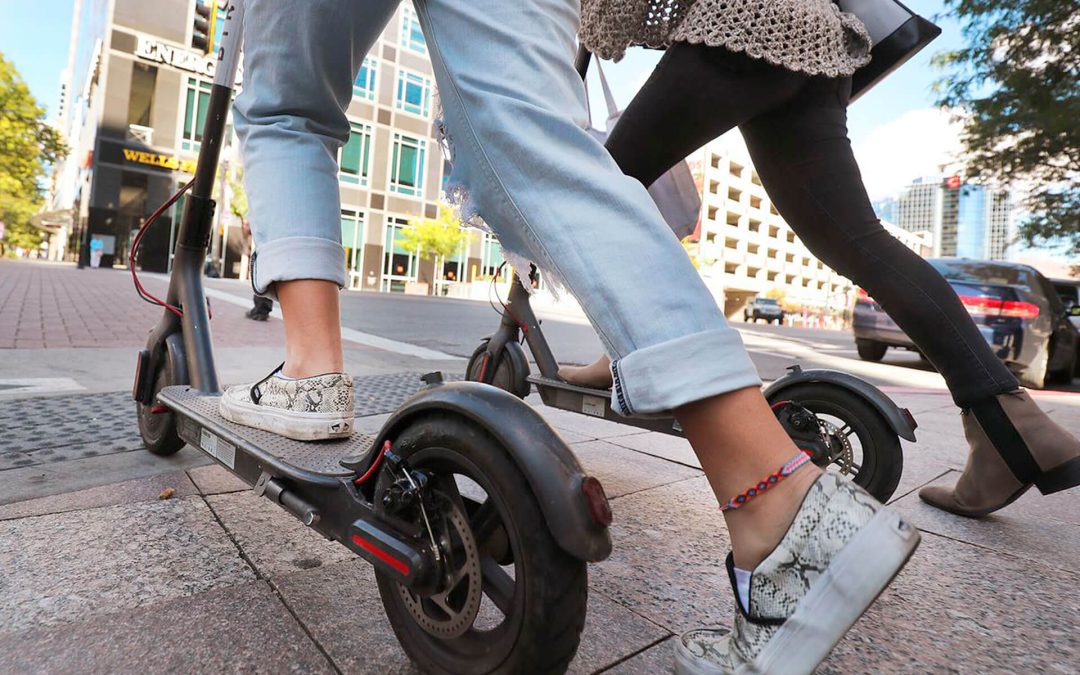The adoption of micromobility is not only advancing through individual purchases but also through shared mobility services.
In Europe, 268,281,268 users have utilized this mode of transportation in the past year, according to figures published by Micro-Mobility for Europe (MmfE).
These numbers are divided among users of electric scooters and bicycles, with electric scooters being the most widely used at 240 million and electric bicycles at 28 million.
The survey conducted by the association promoting micromobility within the Union includes 24 countries and 515 cities that implement these services.
The figures also reveal that 700,560 electric scooters and 79,917 electric bicycles have been used.
Furthermore, they have covered a total distance of 535 million kilometers across European cities.
Injuries from Micromobility
While the demand for shared micromobility services in Europe continued to increase in 2022, with a 39% growth compared to 2021, the rate of e-scooter injuries requiring medical treatment has decreased by almost 20% compared to 2021.
The risk of fatality has decreased by 17.7% compared to 2021.
When comparing modes of transportation, the data shows that the risk of injuries requiring medical treatment is comparable between shared electric scooters and shared electric bicycles.
In Germany, where the total distance traveled by bicycle can be deduced from an available ministerial report, a similar risk of fatal incidents is observed for shared scooters and bicycles.
In early 2023, MmfE published the first-of-its-kind data for 2021 on shared scooters, aiming to contribute evidence to the public discussion on road safety.
The recently published incident data for 2022 includes information on shared electric bicycles in addition to e-scooters.
“We hope that this knowledge will help inform conversations and road safety policies in the Union that reduce the risks of incidents for vulnerable road users,” expressed Sebastian Schlebusch, Initiative Leader at MmfE.
Issues with Scooters in Paris
Just over a month ago, Paris made the decision, through a public referendum, to ban electric rental scooters.
This is a striking case, considering that Paris was the first capital to include them.
“The trend is actually going in the opposite direction. Paris is an atypical case, as even other cities in France like Lyon, Grenoble, Bordeaux, and more are expanding their programs,” comments Arnau Pérez, Head of Institutional Relations at Lime.
They are following a global trend, where cities like New York, London, Rome, Chicago, and nearly all other major cities are extending permits and expanding their programs.
To this, Pérez adds, “Lime continues to innovate and work hard to position itself as the number one multimodal provider and make shared electric bikes and scooters more accessible to more people.”
One city that followed this path was Barcelona.
It is the only major city without shared electric scooters, leading to a growth in privately owned ones.
In this way, people are being deprived of the benefits of the model.
Such prohibitions often have “consequences for all citizens” who will likely experience crowding in public transportation and increased traffic on the roads.
Nevertheless, the scooter and electric scooter operator has seen a 27% increase in new users.
This translated into a 30% increase in the number of trips when comparing 2022 to 2021.






